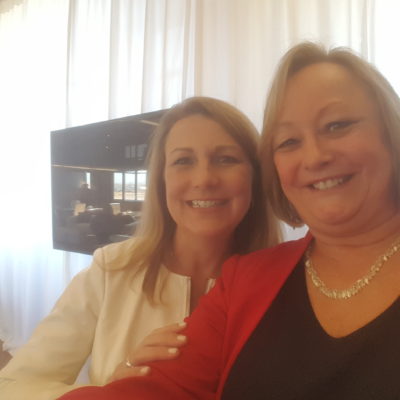Strategic communication manages very focused messages and achieves goals while respecting the complexities of interacting with different audiences. The point of communicating strategically is to turn situations into action. It is critical to understand how the C-Suites (CEO’s, CFO’s, CIO’s, senior managers, presidents, your boss) think before selling your brilliant idea so you must get into their heads, not yours.
For example, after a university board meeting, a staff member named Jamie walked out of the board room simultaneously with the president of the university. She reintroduced herself and they shook hands. Polite exchanges were made and Jamie casually said, “Ms. President, you had expressed in the board meeting that raising research funds is a priority for the university. The research department calculated that adding a fund-raising element to the annual class reunions could provide much needed revenue for research. It is projected that if we offer a reunion with a competition between the classes, the university could raise $50 million.”
“Great,” the president replied. “May I see a proposal on my desk tomorrow morning?” “Absolutely,” Jamie replied.
This is a prime example of using the business skill of strategic communication. In the hectic world of managing our jobs, we are continually executing logistics at a record-setting pace—constantly determining the “what ifs” and problem solving while in perpetual motion. And when we do have brilliant ideas, we table them because we are too busy to take them on or think the boss will not listen.
Understanding C-Suites
Based on examining hundreds of executive profiles, the executive search firm Heidrick & Struggles discovered how C-Suite jobs are evolving. According to “The New Path to the C-Suite,” published in Month year, Harvard Business Review, there is one strikingly consistent finding: once people reach the C-suite, technical and functional expertise matters less than leadership skills and a strong grasp of business fundamentals. For example, Chief Information Officers need to know how to create business models; Chief Financial Officers, how to develop risk-management strategies; Chief Human Resource Officers, how to design a succession plan and a talent structure that will provide a competitive edge. In other words, the skills that helped C-Suite leaders climb to the top won’t suffice once they get there.
Organizational Goals
Leaders in the C-Suite think about how new ideas relate to the goals of the organization. The majority of business goals are usually broken down into four categories: organizational growth, keeping the stakeholders happy, value, and agility. How quickly can the idea be implemented with little or no cost.
Current Business Issue
What is the business issue that is of most importance to your boss, not you. The president communicated that the most pressing current business issue was to obtain funding for research. How will your idea address the business issue that is at the top of your C-Suite’s list?
Understanding Your Customer
Knowing and understanding the customer is critical for organizational effectiveness. Does your idea support the customers? Bosses always think about the customers and the feedback they are providing about products and services. So should you.
Effective Solutions
Executives will listen to a pitch that has the greatest impact on solving a problem. Is your idea effective? Can it deliver solutions? Will your idea deliver a return on investment (ROI)? Will the benefits outweigh the costs? Can you provide hard facts and accurate data to back up your idea?
Concise Statement
Leaders do not have enough time. They run from one meeting to the next, so if you can’t describe your idea in 30 seconds or less, the CEO’s eyes glaze over, and then you almost always get a “no.” Being concise is a fundamental skill in getting your idea heard. To achieve this you must do the following:
Your Reputation
C-Suites always check out your reputation. What do others within the organization think about you? Are your ideas credible? C-Suites surround themselves with individuals who are loyal. If you have a reputation for being a rebel, your ideas may never be heard or implemented. If your ideas are always being rejected, you may want to examine your reputation. If you have said or done something that has damaged your reputation within the organization, you may want to consider moving on and starting over.
Timing
Ideas that support what is currently going on within an organization are usually considered. Some brilliant ideas are so “forward thinking” that the organization is not ready. Perhaps the idea requires more time to garner buy-in and support from additional departments. Individuals who have been with an organization for many years become silent because their “ideas are never heard.” Then a few years later, they complain, “That was my idea 10 years ago and nobody listened.” New ideas are all about timing. Hang onto your brilliant idea and wait patiently for the perfect time to strategically communicate your idea.
Egos
Ego is an inflated feeling of pride in your superiority over others. If your C-Suite has an inflated ego, you may have to employ the strategy of making your idea sound like their idea. But be careful of brown-nosing the boss, too. This may create a problem with your colleagues.
P.S.
When you receive your YES….you better deliver on your promise!
Michele Wierzgac, MSEd, speaker and author, promises that you will leave her solution-driven keynotes and workshops with at least one passionate, life transforming, leadership tool – something that will change the way you seek out a solution and practically apply it without getting stuck.
Email Michele at michele@micheleandco.com or give her a call at (708) 710-7055!







